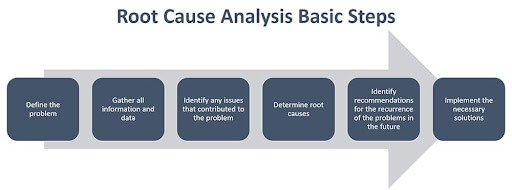Tech
Understanding the Importance of Root Cause Analysis and Mining Incidents

Mining is an extremely dangerous profession. Nobody is going to argue that, it doesn’t matter where you are or what it is you are mining, digging deep into the earth is an extremely hazardous way to make a living. It’s no small wonder that pop culture has romanticized gold miners, coal miners, and the like, especially in. Pieces set in a time when it was even more dangerous than it is now. In truth, miners are heroes, risking their lives to make sure that we have invaluable resources that make the world go round.
And while the brave men and women venturing into the minds, operating heavy machinery, and risking cave-ins are the biggest heroes, you can’t really place a value on the importance of root cause analysis when it comes to mining incidents. But, what is root cause analysis? It sounds like a string of jargon or buzzwords. This couldn’t be further from the truth.
Understanding the dangers of mining…
There are more dangers with mining then one might initially suspect. Yes, the most commonly-known sort of incident is a cave-in or other sort of white-spread series of injuries due to the instability of geology. These tragedies make the news, and they absolutely should. When these hard-working people are severely injured, or heaven forbid, lose their lives, the world should indeed take a moment of silence to mourn them and thank them for their heroic sacrifice. However, simply blaming these incidents on the instability of the terrain, machine failure, or whatnot is to be rather blind and careless.
There are a seemingly insurmountable number of variables when it comes to mining, regardless of the type of mining or the location of the mine. Just understanding the nature of the local geology itself brings in algorithms that would stomp Albert Einstein himself. In a time before advanced mathematical modeling on computers, certain types of mining which bring us modern conveniences today weren’t at all possible.
When an incident happens, be it a disaster or simply underperformance, a detailed analysis must be done to determine what the actual primary cause of the problem is. If the ground is being unstable, why is it being unstable? Geologists and physicists have to come in, study the terrain and geology, and determine what the primary aspect is that’s causing cave-ins, machine malfunctions, and so forth.
Any problem in the universe can ultimately be boiled down to a root cause, but this is no small feat. This is where the geniuses and root cause analysis come in. They look at what’s going on, and they use advanced mathematics, understanding of physics, probability and statistics to track backwards to determine what the primary issue is. As the old saying goes, getting to the root of the problem. Otherwise, the allegory of the hydra is very applicable in mining. Simply avoiding areas that seem unstable, or shoring up areas that seem problematic is only cutting off one head of the beast, where more may grow in its place.
With the dangers of mining and the seemingly infinite number of interrelated variables, solving a problem in saving lives is not easy, and only through advanced root cause analysis can this be insured. Any mining operation that doesn’t retain educated professionals specializing in root cause analysis is a mining firm destined to cost lives, money and possibly have revocable effects on the local ecology for generations to come.

-

 Business3 years ago
Business3 years agoHow to Do Long-Distance Moves with Children
-

 Travel2 years ago
Travel2 years agoQuick Guide: Moving To Santa Rosa?
-

 Real Estate3 years ago
Real Estate3 years agoWhy Dubai Festival City is a Great Neighbourhood for Young Learners
-

 Business3 years ago
Business3 years agoIs Guest Posting a Good Inbound Marketing Strategy?
-

 Business1 year ago
Business1 year agoThe Ultimate Guide To Thriving In Your Printing Franchise
-

 Business1 year ago
Business1 year agoExploring The Benefits And Challenges Of Restaurant Franchising
-

 Tech3 years ago
Tech3 years agoCyber Table That Will Change Your Life
-

 Lifestyle1 year ago
Lifestyle1 year agoDallas’ Hidden Gems: 6 Must-Try Restaurants Off The Beaten Path!









Recent Comments